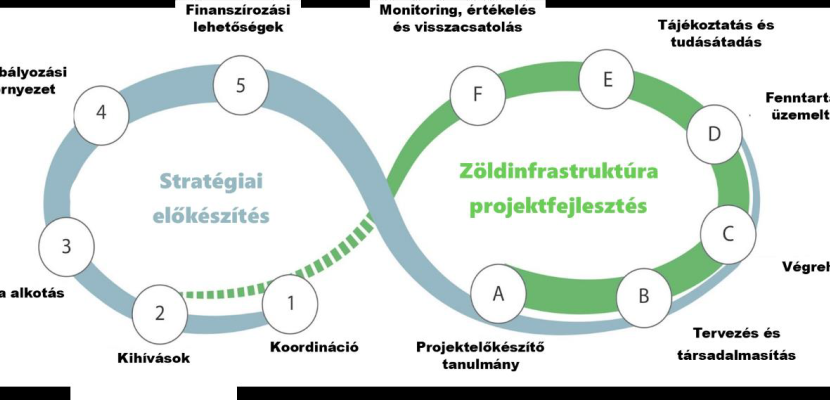
Green Infrastructure Guidance for Municipalities

About this good practice
The Guidance outlines the process leading to an effective GI intervention, which addresses environmental and climate risks such as drought, flash floods, pluvial floods, heat island, soil erosion, air pollution, etc. The process is divided into the following two stages and detailed presented tasks:
Strategic preparation: coordination, identifying local challenges, strategic foundation regulatory environment and funding opportunities.
Project development: project preparatory study, planning and the social promotion
realisation, maintenance and management, knowledge transfer and monitoring.
The main stakeholders of the GP are the municipalities, but it also provides a set of criteria for the evaluation of proposals and cooperation between planners.
Resources needed
Five experts were directly involved in the development of the guidelines, but other experts and public administrators were also involved in the consultation. The cost of developing the guide was 15 600 578 HUF (40 077 EUR).
Evidence of success
The guide is interprofessional, clear, didactic, easy to understand, and can be a useful tool for any level of decision-making forum even without the need for special knowledge.
The guideline is being finalised. Success will be measured by how many and how much more effective GI projects are prepared, submitted and implemented using it.
Potential for learning or transfer
The guide presents the entire cycle of project development, so it does not only focus on implementation, but also provides assistance to local governments from initial coordination and organisational development through strategy creation to maintenance and monitoring. Green infrastructure developments can only achieve their goal if they address real, area-specific problems. Therefore, planning is based on the comprehensive knowledge of the settlement, the identification of specific local problems and conflict areas.
The guide was created for the Hungarian context, and the application of possible solutions must always be adapted to the specific settlement. At the same time, the guide describes the most typical problems and challenges related to the assessment and evaluation of the baseline condition (per settlement type), which can be mitigated by developing green infrastructure.
Further information
Good practice owner
You can contact the good practice owner below for more detailed information.